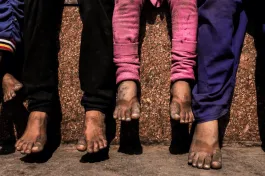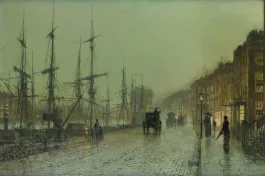Years ago, as a college student inside the University of Chicago bookstacks, I encountered a photograph of my grandfather Yasin Khan in the book Caste, Religion and Power: An Indian Case Study by Pratap Chand Aggarwal, identifying him as a prominent leader of the Meos of Mewat, a Muslim minority community. Like many non-resident Indians, I knew little of south Asian history and even less about Mewat, despite its sizeable population. That photographic encounter spurred a series of questions over many years.
It ended up with my hybrid memoir, An American Meo: A Tale of Remembering and Forgetting (Sputyen Duyvil Press) that was published earlier this year. As the title suggests, it is a book about the dual identity of being both an American and a Meo, an inescapable tribal identity, and the fragmented nature of unpacking a complex history of the Meos.
Mewat is an example of a community that has lived with differences, even contradictions, for hundreds of years.
Soon after the book’s release, a wave of communal riots overcame Mewat. The riots themselves stressed the importance of the book’s project to share the life and contribution of Yasin Khan. Meos are historically an indigenous population that span Haryana, Rajasthan and Uttar Pradesh. Meos were considered Hindus but converted to Islam over time through the spread of Sufism in south Asia. Even until the 20th century, they were seen as a community that had both Hindu and Muslim syncretic practices. Mewat is an example of a community that has lived with differences, even contradictions, for hundreds of years. Yasin Khan, as a preeminent leader of the Meos, had a far-reaching vision.
Yasin Khan was born in 1896 in the village of Rehna in Mewat, Haryana. At a young age, he experienced his father’s own death and was raised by an uncle who was also considered a spiritual Sufi leader and referred to as Wali-ji. Despite his humble beginnings, Yasin Khan excelled at school and studied in Aligarh University and later became the first lawyer in Mewat. He was fluent in multiple languages, including English, which paved a pathway for his increasing political activism and later as a member of the Punjab Legislative Assembly (as Mewat previously fell under Punjab). During that time, he was responsible for constructing roads throughout Mewat, primary schools in each village and establishing a hospital and animal hospital. Yasin Khan struck an alliance with a sympathetic Britisher, F.L. Brayne and together they created the Yasin Brayne Meo High School in Nuh district. The Yasin Brayne Meo High School later occupied significance during the 1932 revolt and Partition. The Yasin Brayne Meo High School continues to be an important centre in Mewat, including as a kabristan or burial site for members of my extended family and the grounds for the urs or Sufi death anniversary celebration of Yasin Khan till today.
Yasin Khan was a known figure at that time in pan-Islamic movements, but he opposed the movement of Meos to Pakistan.
Around 1932, there was growing unrest because the Raja of Alwar at the time had imposed high agricultural taxes against Meos and despite famine and intense poverty in the area, refused to lower them. In contrast, the Raja of Alwar lived an ostentatious and exorbitant lifestyle in stark contrast to the plight of the Meos. Despite pleas from the Meos to lower the tax, at least in accordance with the rates in adjoining British-controlled areas such as Gurgaon, the Raja of Alwar refused. The unrest led to a single incident of violence against the raja’s officials which then grew to an armed Meo uprising. In response, the raja and his army viciously retaliated with great force against the Meos. Yasin Khan then sought British intervention. After a series of events, the tax was lowered. The raja too was later exiled. Because of these events, the Meos crowned Yasin Khan, Chaudhriyon ka Chaudhry, the designated leader of the entire Meo tribal community. Yasin Khan was the first such designated leader since Hasan Khan Mewati who fought against Babar during the Battle of Khanwa in the 16th century.
Growing up, when my mother or other relatives spoke of Yasin Khan, they often recited a well-known Mirasi or folktale couplet.
Raja su Rani Kahe tu Rehna Ko Jaye
Hun Mile Aasin tu Wake Paman Pad Jaye
The Queen asks the King to go to Rehna,
Grab hold and bow your head near Yasin Khan’s feet
It took me many years to piece together that this folktale was rooted in the Meo peasant uprising of 1932.
Subsequent princely rulers however, responded to the Meos’ success in the 1932 uprising through ongoing retaliatory violence. Yasin Khan too faced increasing opposition within the community for his efforts to advance education. He also faced various threats for his growing stature. The height of this anti-Meo violence and rupture took place during Partition.
Yasin Khan was a known figure at that time in pan-Islamic movements but he opposed the movement of Meos to Pakistan. Yasin Khan himself had ties and owned land in Pakistan and could have comfortably migrated there, a detail my mother shared with me more than once as a child. Yet, Yasin Khan feared that Meos displacement to Pakistan would lead to the dispossession of their land rights. During the independence movement, Yasin Khan allied himself with Gandhi and arranged for his visit to the village of Ghasera. In a famous speech to the villagers, Gandhi called Meos the rirrh or the backbone of the nation.
His [Yasin Khan’s] trajectory and vision proves important not just for me as his granddaughter but as a key political thinker and strategist who could see both the struggles and the contributions of Meos.
Yasin Khan believed in a vision of India where Muslims could remain and retain land rights and equal citizenship. He also understood the Meos’ tie to the soil. Meos bore an allegiance and loyalty to the land that caused them to fight both Mughal rulers and later British colonialists during the 1857 uprising. Yasin Khan so clearly advocated for Muslims to remain in India that there are tales that he physically lied down on Sohna Road in Mewat to stop the movement. Refugees were housed in the Yasin Brayne Meo High School. Yasin Khan himself was jailed during that time for several months. Even still, around a third of Meos did migrate to Pakistan while two-thirds remained in India.
After Partition, Yasin Khan continued his leadership in Mewat until his death. But the stresses of the political struggles and violence, took a toll on him. When Yasin Khan died, with the loss of such an important figure, it is was said that all of Mewat, not just my grandmother, was widowed that day.
American Meo traverses large swathes of time through vignettes of family and travel, archival research, photographs and poems to share my grandfather’s story and my discovery of him. I only vaguely knew about my grandfather who died long before I was born. To learn about Yasin Khan’s life, I read various texts, spent time in the National Archives in New Delhi and delved into the Urdu biography penned by Hakim Ajmal Khan to learn the specific details of his life. Yasin Khan dismissed attempts to record his life’s activities. As he once said to his biographer, “Do good and throw it in a well,” neki kar aur kuan main daal. Many of his own records and writings were also destroyed during Partition when rioters ransacked his home and burned his papers.
Yet, I find that his life’s work and vision must be revisited in light of the recent violence in Mewat. His trajectory and vision proves important not just for me as his granddaughter but as a key political thinker and strategist who could see both the struggles and the contributions of Meos. His life reveals someone who was fiercely protective of his community and also a secularist, a pluralist and ultimately, a peace broker.
Anisa Rahim is a writer, photographer, and civil rights lawyer. Her work can be seen at anisarahim.com.









